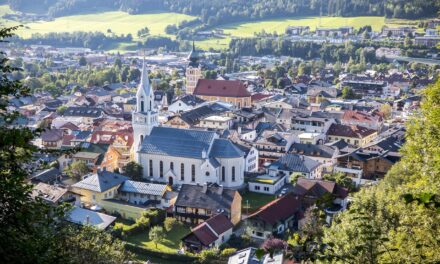Water Cycle Improvement and Interstate and International Cooperation explained
Water Cycle Improvement in Box Elder County: Towns and agricultural areas near the lake
Saving the Great Salt Lake: A Call to Action and Guide
The Great Salt Lake, a vital ecosystem and resource for Utah, is facing a severe water crisis. Understanding the problem and taking action is crucial for its survival.
Understanding the Problem:
How Water Flows: The Great Salt Lake’s water supply primarily comes from rivers like the Jordan, Bear, and Weber.
The Impact of Water Scarcity: The shrinking lake has dire consequences for the environment and human communities:
- Wildlife Habitat Loss: As the lake shrinks, essential habitats for birds and fish disappear, impacting wildlife populations and biodiversity.
- Air Quality Issues: Dust storms from the exposed lakebed threaten air quality and public health.
- Economic Impacts: Tourism, recreation, and other industries reliant on the lake suffer from its decline.
The Root Causes:
- Climate Change: Rising temperatures and changing precipitation patterns contribute to reduced water flow into the lake.
- Human Water Use: Excessive water withdrawals for agriculture, urban development, and industrial uses further strain the lake’s water supply.
Taking Action:
Conservation is Key: We must reduce our water consumption and implement efficient water management practices. Here are some steps we can take:
- Conserving Water at Home: Fix leaks, install water-efficient appliances, and practice responsible watering.
- Supporting Water-Wise Businesses: Patronize businesses that prioritize water conservation and sustainability.
- Advocating for Policy Changes: Support legislation promoting water conservation, responsible development, and restoration efforts.
Beyond Conservation: We need to address the root causes of the water crisis. This includes:
- Investing in Sustainable Agriculture: Promoting drought-resistant crops and efficient irrigation systems.
- Developing Water-Saving Technologies: Exploring innovative ways to capture and store water.
- Supporting the Active Climate Rescue Initiative: This organization is actively working to address water shortages in the Great Basin, including the Great Salt Lake. (Visit https://climate-rescue.org/ to learn more.)
The Great Salt Lake needs our collective action. By understanding the problem, embracing conservation, and advocating for change, we can help ensure the future of this important ecosystem.
The Great Salt Lake: A Shrinking Treasure
TL;DR: The Great Salt Lake is facing a major water shortage, driven by a combination of climate change and human water use. This affects the entire region, including Box Elder County. We need to find ways to conserve water, use it more efficiently, and work together across state and international borders to protect this vital ecosystem.
The Great Salt Lake: A Vital Ecosystem
The Great Salt Lake is a giant, salty body of water in Utah, USA. It plays a crucial role in the region’s ecosystem. The lake is home to many birds, fish, and other wildlife. It also provides a source of income for local businesses and communities.
How Water Flows: The Great Salt Lake Water Cycle
The Great Salt Lake receives most of its water from rivers like the Jordan River, Bear River, and Weber River. These rivers collect water from snowmelt in the mountains and rainfall. Here’s how water moves through the region:
- Snow and Rain: Snowfall and rain in the mountains feed rivers that flow into the Great Salt Lake.
- Rivers: Rivers collect water from snowmelt and rainfall and carry it towards the Great Salt Lake.
- Evaporation: The hot desert sun causes water from the lake to evaporate into the air.
- Groundwater: Water from the rivers and the lake also seeps into the ground, forming underground reservoirs called aquifers.
Box Elder County: A Closer Look
Box Elder County, located near the Great Salt Lake, is an important agricultural area. Farmers in the county rely heavily on water from the Great Salt Lake and its tributaries for irrigation.
The Water Crisis: A Looming Threat
However, the Great Salt Lake is facing a serious water shortage. The lake has shrunk to its lowest level in recorded history, due to:
- Climate Change: Warmer temperatures lead to faster evaporation of water, reducing the lake’s water levels.
- Drought: Reduced rainfall in recent years has impacted the flow of rivers feeding the lake.
- Increased Water Use: Growing populations and agriculture require more water, leaving less water for the Great Salt Lake.
The Impact of Water Scarcity
The shrinking Great Salt Lake has many negative impacts on the environment and people:
- Wildlife Habitat Loss: As the lake shrinks, vital bird and fish habitats are destroyed.
- Dust Storms: Dried-up lakebed produces toxic dust that affects air quality and health.
- Economic Impacts: Reduced tourism and fishing industries hurt local economies.
Addressing the Water Crisis: A Call to Action
To protect the Great Salt Lake, we need to find solutions to conserve water and address the root causes of the shortage. Here are some promising solutions:
- Water Conservation Practices: This includes using water-efficient appliances, fixing leaks, and watering lawns less often.
- Innovative Irrigation Techniques: Farmers can use more efficient methods like drip irrigation that use less water.
- Policy Measures: Governments can enact policies to encourage water conservation and allocate water resources more effectively.
- Interstate and International Cooperation: Sharing resources and collaborating with neighboring states and countries is crucial to address the problem.
The Active Climate Rescue Initiative
The Active Climate Rescue Initiative (https://climate-rescue.org/) is actively working to address water shortages in the Great Basin, including the Great Salt Lake. This initiative focuses on developing and implementing sustainable solutions for water management and conservation.
A Path Forward: Saving the Great Salt Lake
The Great Salt Lake is a treasure that needs our collective efforts to protect it. By implementing water conservation practices, using innovative irrigation techniques, and fostering cooperation among states and nations, we can help reverse the decline of this vital ecosystem. Our actions today will determine the future of the Great Salt Lake and the entire region.
More on Water Cycle Improvement…
- ## SEO Keywords for Water Cycle Improvement and Interstate/International Cooperation:
- Water Cycle Improvement:
- Water cycle management
- Sustainable water management
- Water conservation strategies
- Water cycle restoration
- Water scarcity solutions
- Water security initiatives
- Water quality improvement
- Groundwater recharge
- Drought mitigation
- Flood control measures
- Climate change adaptation for water
- Water efficiency technologies
- Integrated water resource management
- Water footprint reduction
- Water pollution prevention
- Water recycling and reuse
- Urban water management
- Agricultural water use efficiency
- Water infrastructure development
- Water governance and policy
- Water education and awareness
- Interstate and International Cooperation:
- Transboundary water management
- Water diplomacy
- International water law
- Water sharing agreements
- Water cooperation frameworks
- Cross-border water resources
- International water organizations
- Water conflict resolution
- Global water challenges
- Sustainable water development goals
- Water security for all
- Multilateral water initiatives
- Regional water cooperation
- International water funding
- Water data sharing
- Water technology transfer
- Water knowledge exchange
- Capacity building for water management
- Water diplomacy and peacebuilding
- Combined Keywords:
- Interstate water cooperation for water cycle improvement
- International water agreements for sustainable water management
- Transboundary water resource management for climate change adaptation
- Global water partnerships for water security
- Water cycle restoration through international collaboration
- Interregional water cooperation for drought mitigation
- Water efficiency technologies for international development
- Capacity building for transboundary water management
- Water governance and policy for sustainable water use
- Water diplomacy for peace and water security
- Long-Tail Keywords:
- How international cooperation can improve water cycle efficiency
- Best practices for interstate water resource management
- The role of water diplomacy in resolving water conflicts
- Funding opportunities for transboundary water projects
- Case studies of successful water cooperation between nations
- Impact of climate change on transboundary water systems
- Strategies for promoting water security through international collaboration
- The future of water management in a globalized world
- Water diplomacy and its contribution to sustainable development
- How water technology transfer can benefit developing countries











